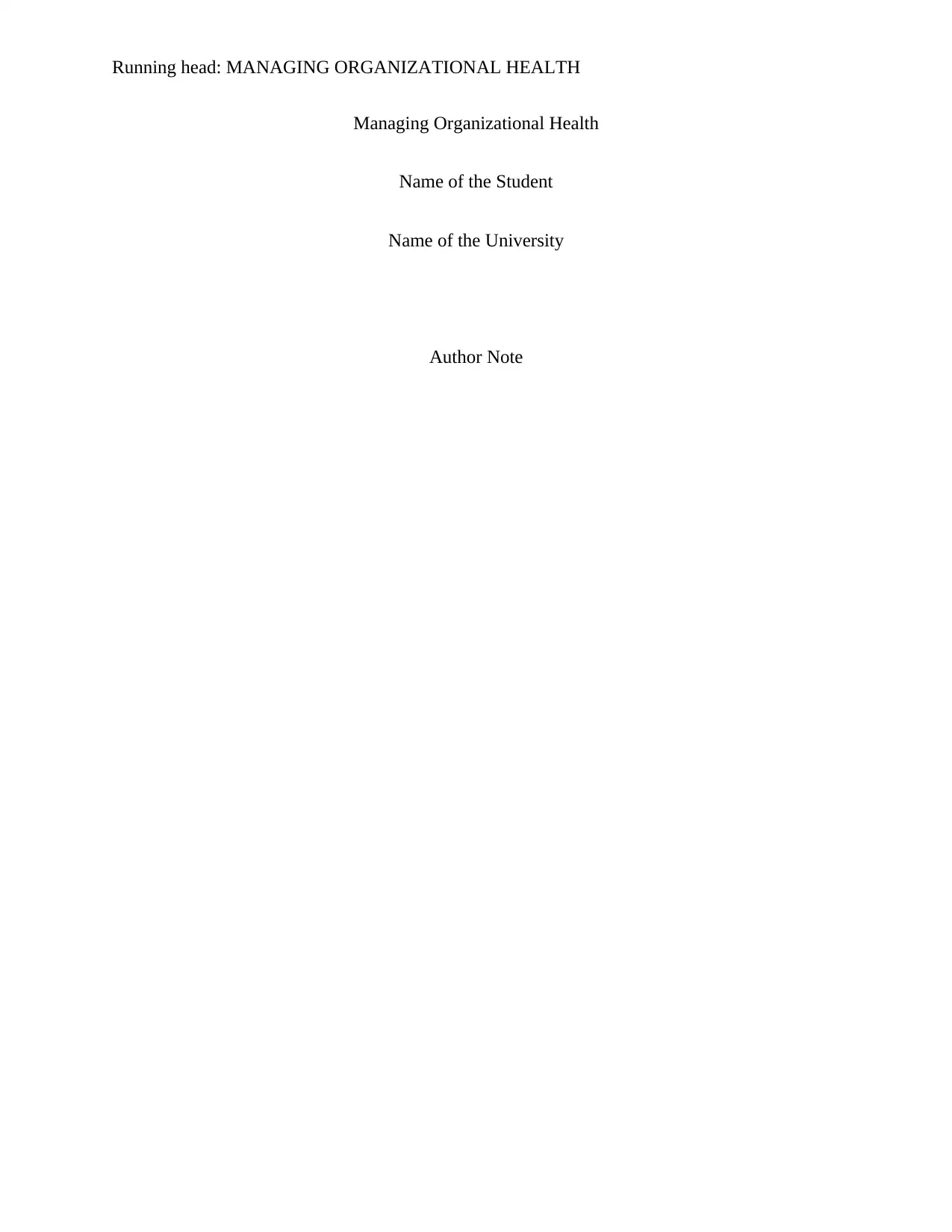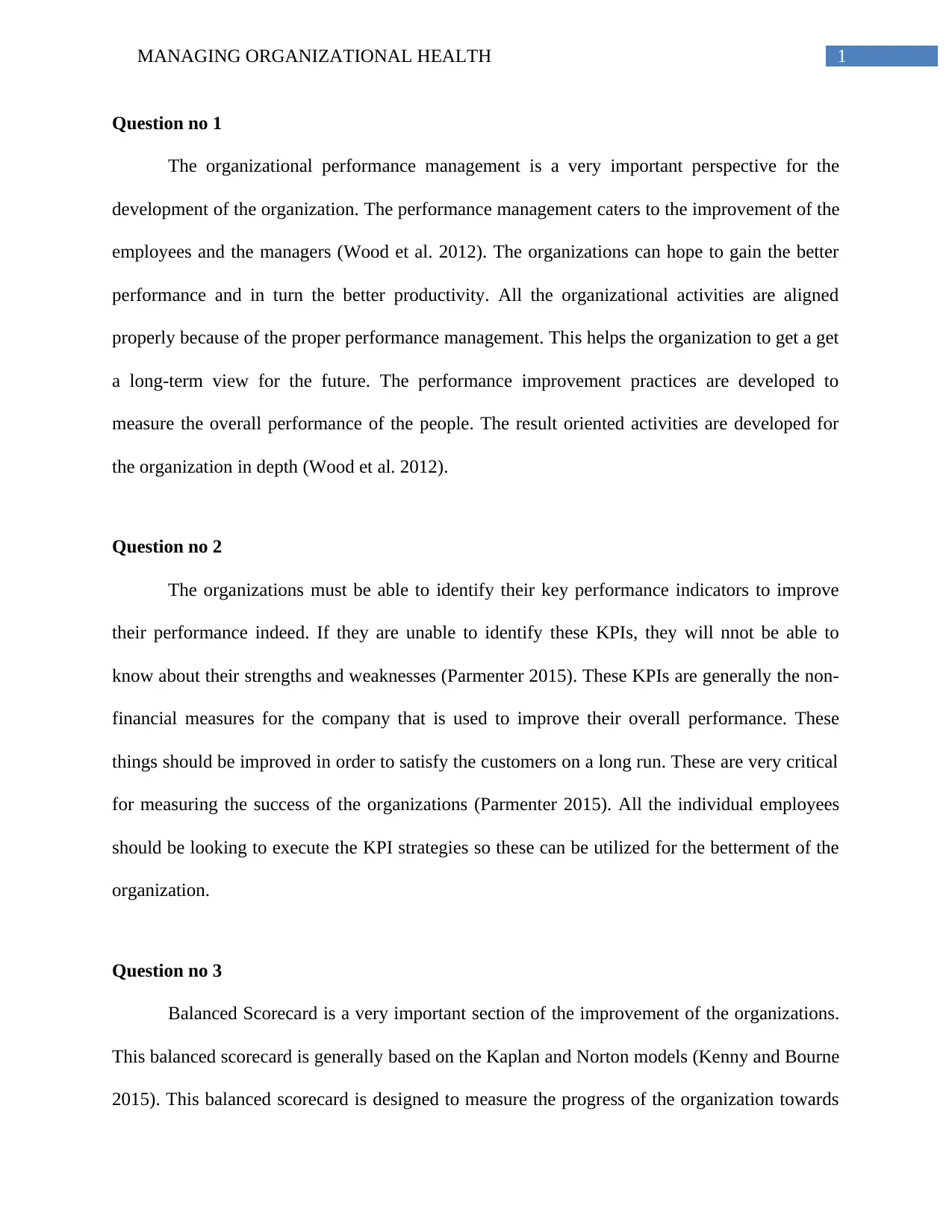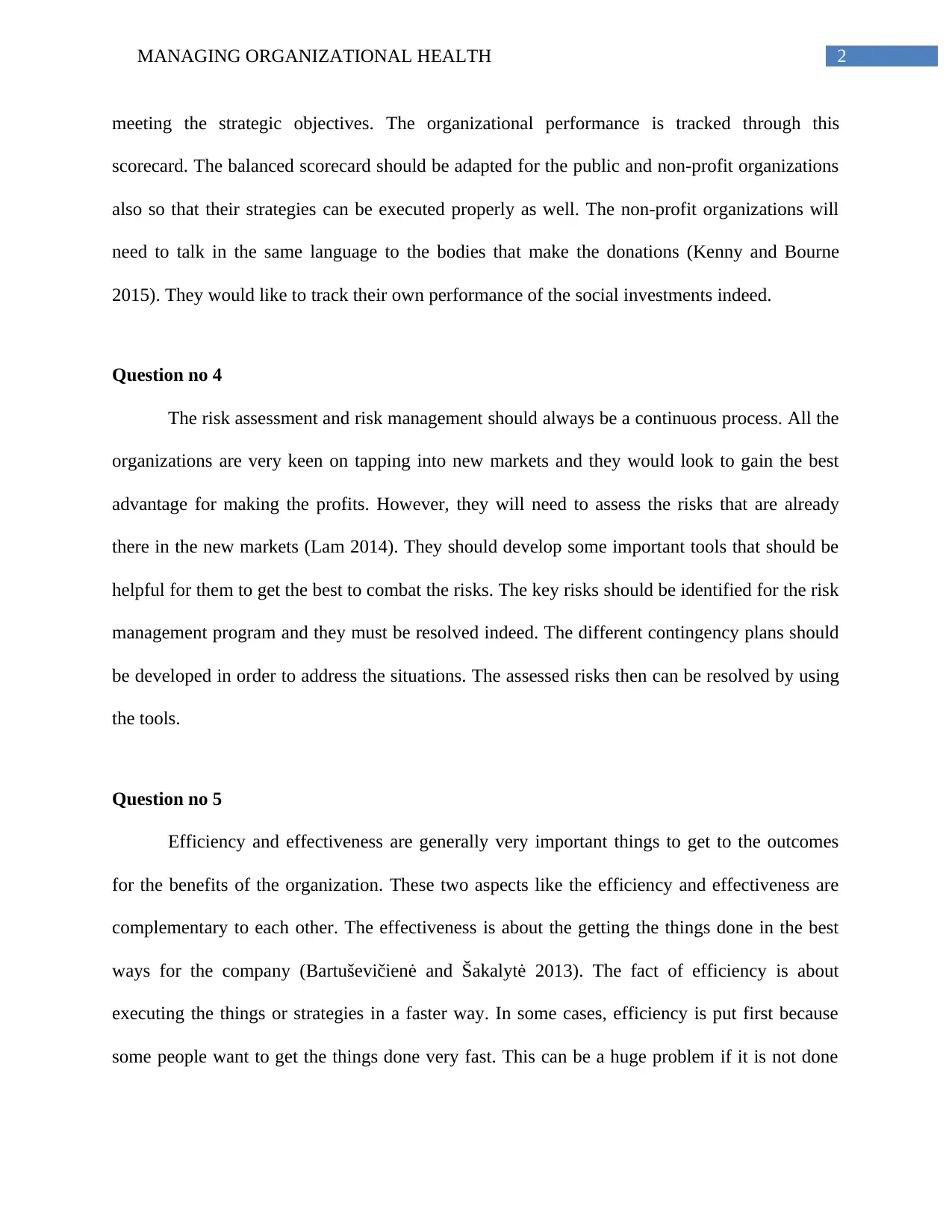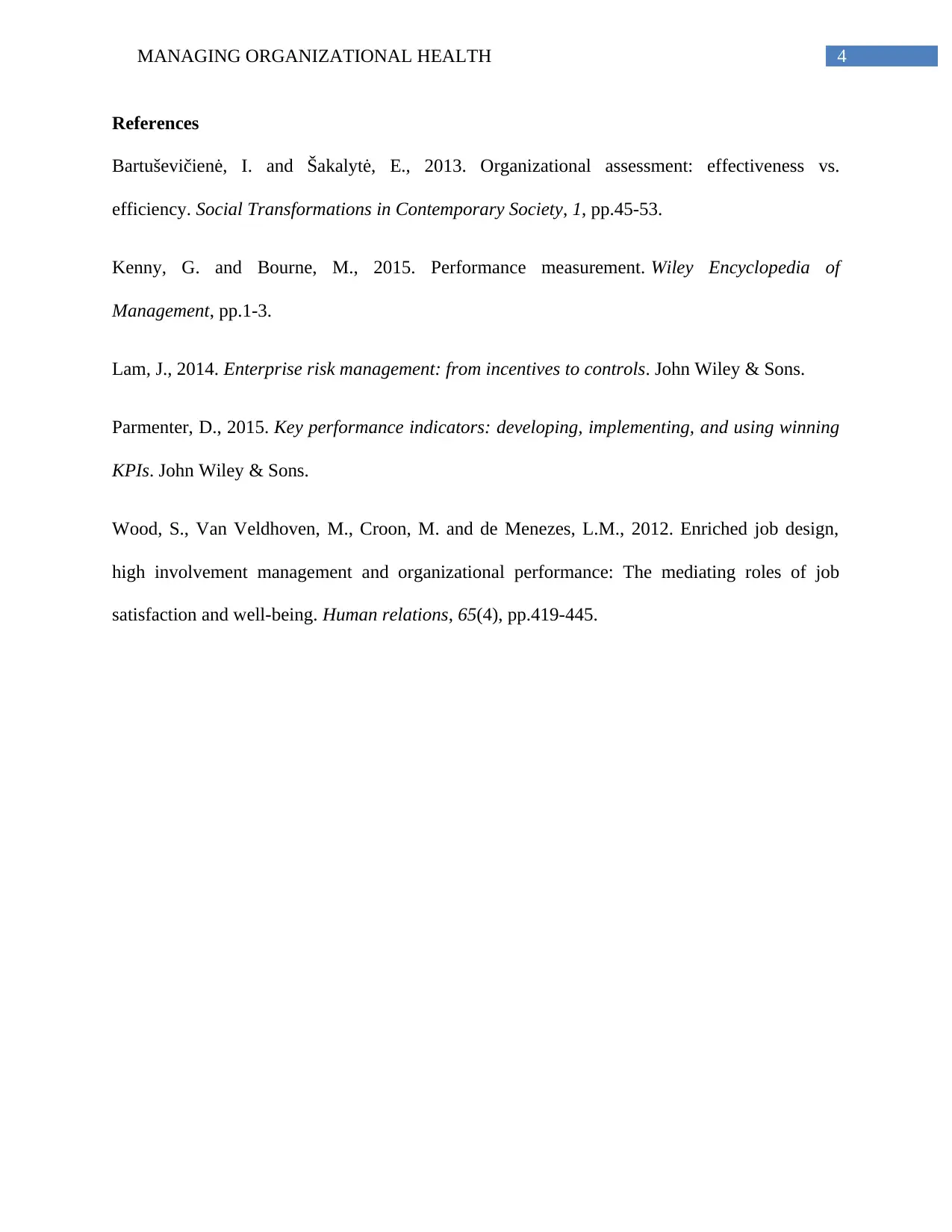Organizational Performance Management Assignment - Report Analysis
VerifiedAdded on 2023/06/10
|5
|807
|173
Report
AI Summary
This report delves into the core aspects of organizational performance management, addressing five key questions. It explores the benefits of a performance management system, emphasizing its role in aligning activities and fostering long-term organizational goals. The report highlights the importance of identifying Key Performance Indicators (KPIs) for measuring strengths and weaknesses, and the application of Balanced Scorecards, adapting them for public and non-profit sectors. It underscores the necessity of continuous risk assessment and management in a dynamic market environment and differentiates between efficiency and effectiveness, arguing for the primacy of the latter in achieving desired organizational outcomes. The report is supported by relevant references using the Harvard referencing system, providing a comprehensive overview of the subject matter.
1 out of 5











![[object Object]](/_next/static/media/star-bottom.7253800d.svg)